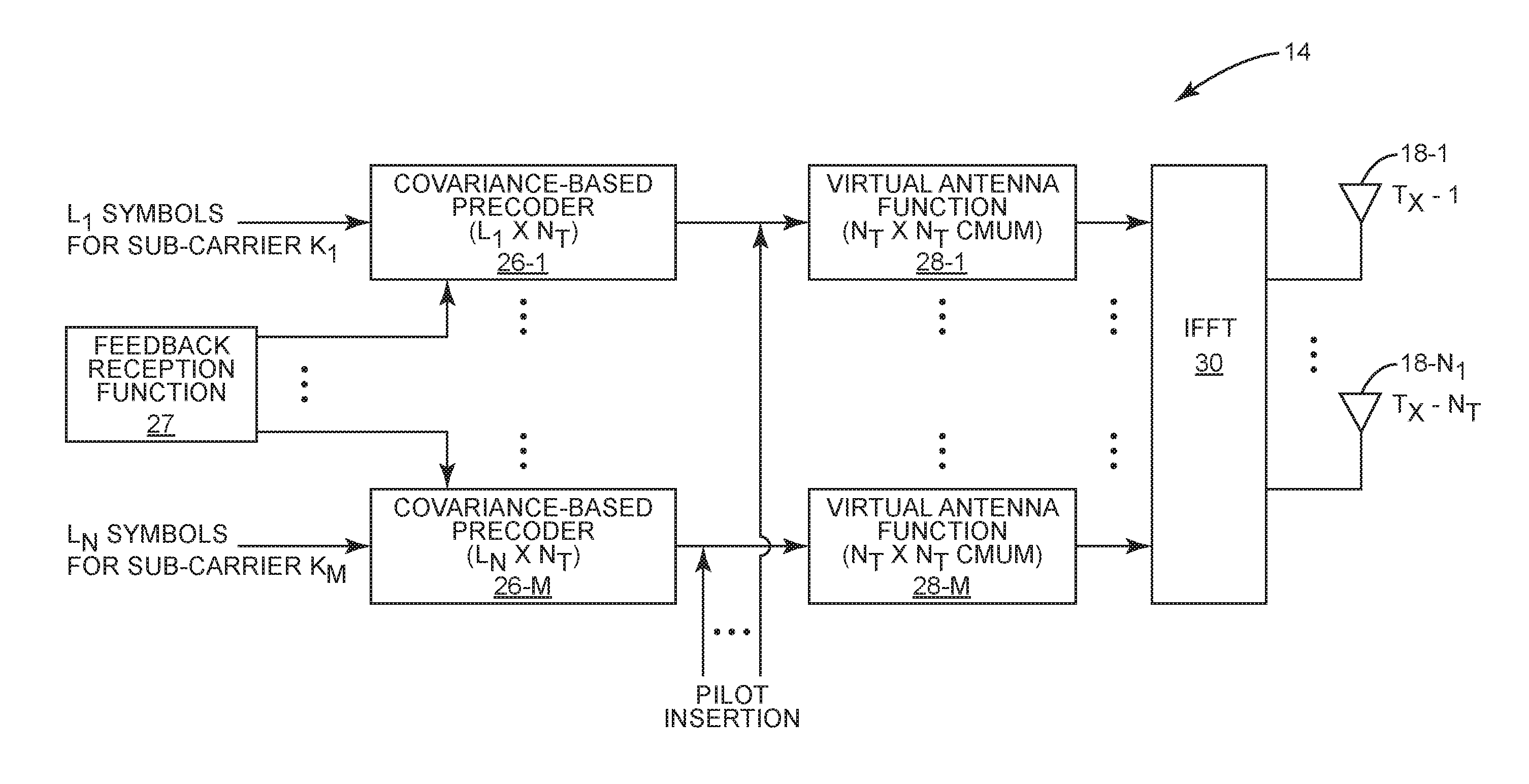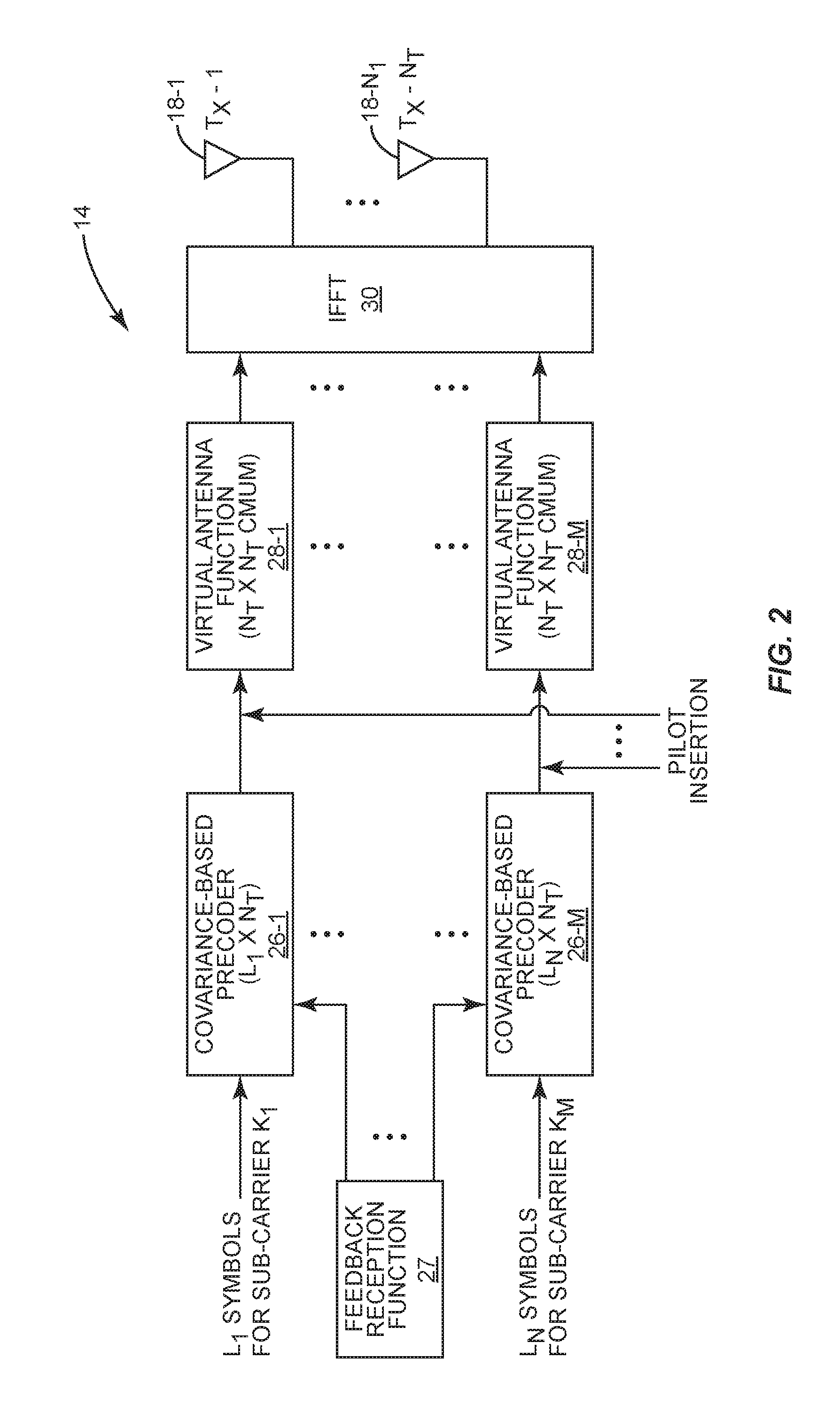Precoding in High-Order MIMO
a high-order, mimo technology, applied in the field of multi-input multi-output (mimo) wireless transceivers, can solve the problems of low transmission quality, low transmission quality, and low transmission quality, and achieve the effect of high transmit channel correlation and high overhead required for feedback
- Summary
- Abstract
- Description
- Claims
- Application Information
AI Technical Summary
Benefits of technology
Problems solved by technology
Method used
Image
Examples
Embodiment Construction
[0013]The embodiments set forth below represent the necessary information to enable those skilled in the art to practice the invention and illustrate the best mode of practicing the invention. Upon reading the following description in light of the accompanying drawing figures, those skilled in the art will understand the concepts of the invention and will recognize applications of these concepts not particularly addressed herein. It should be understood that these concepts and applications fall within the scope of the disclosure and the accompanying claims.
[0014]The present invention provides a covariance-based precoding scheme for high-order Multiple-Input-Multiple-Output (MIMO) wireless communication that exploits long-term transmit channel correlation. As used herein, high-order MIMO wireless communication uses eight or more transmit antennas and eight or more receive antennas. Note, however, that while the present invention is discussed herein with respect to high-order MIMO, th...
PUM
 Login to View More
Login to View More Abstract
Description
Claims
Application Information
 Login to View More
Login to View More - R&D
- Intellectual Property
- Life Sciences
- Materials
- Tech Scout
- Unparalleled Data Quality
- Higher Quality Content
- 60% Fewer Hallucinations
Browse by: Latest US Patents, China's latest patents, Technical Efficacy Thesaurus, Application Domain, Technology Topic, Popular Technical Reports.
© 2025 PatSnap. All rights reserved.Legal|Privacy policy|Modern Slavery Act Transparency Statement|Sitemap|About US| Contact US: help@patsnap.com



